Abstract
A 5-yr-old mentally retarded spina bifida child was taught to walk with the aid of crutches. This behavior was developed through fading of physical prompting within a 10-step successive approximation sequence. Preliminary training to establish gait consisted of developing use of parallel bars through fading of physically modelled responses within a six-step successive approximation sequence. Use of parallel bars ceased during an extinction period and completely recovered upon being primed with one “free” reinforcement. Systematic use of natural reinforcers was employed as an aid in maintaining use of crutches.
Full text
PDF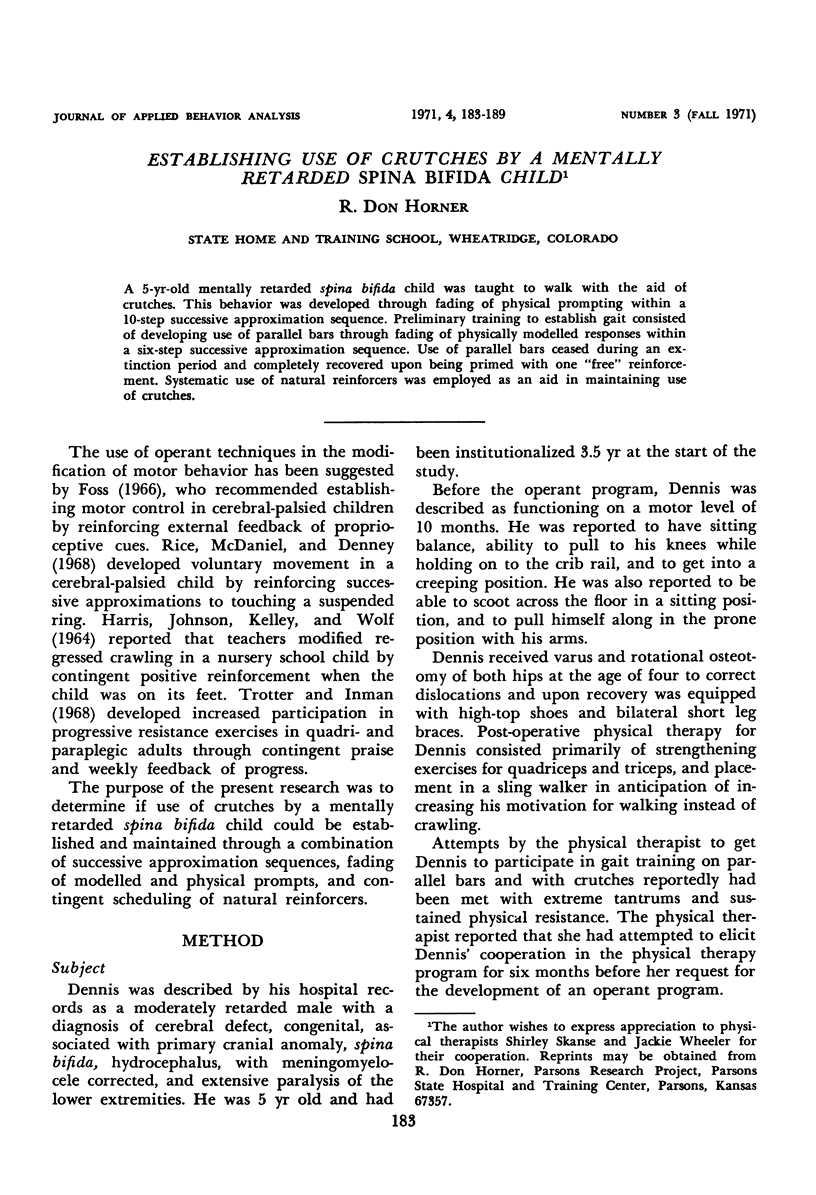
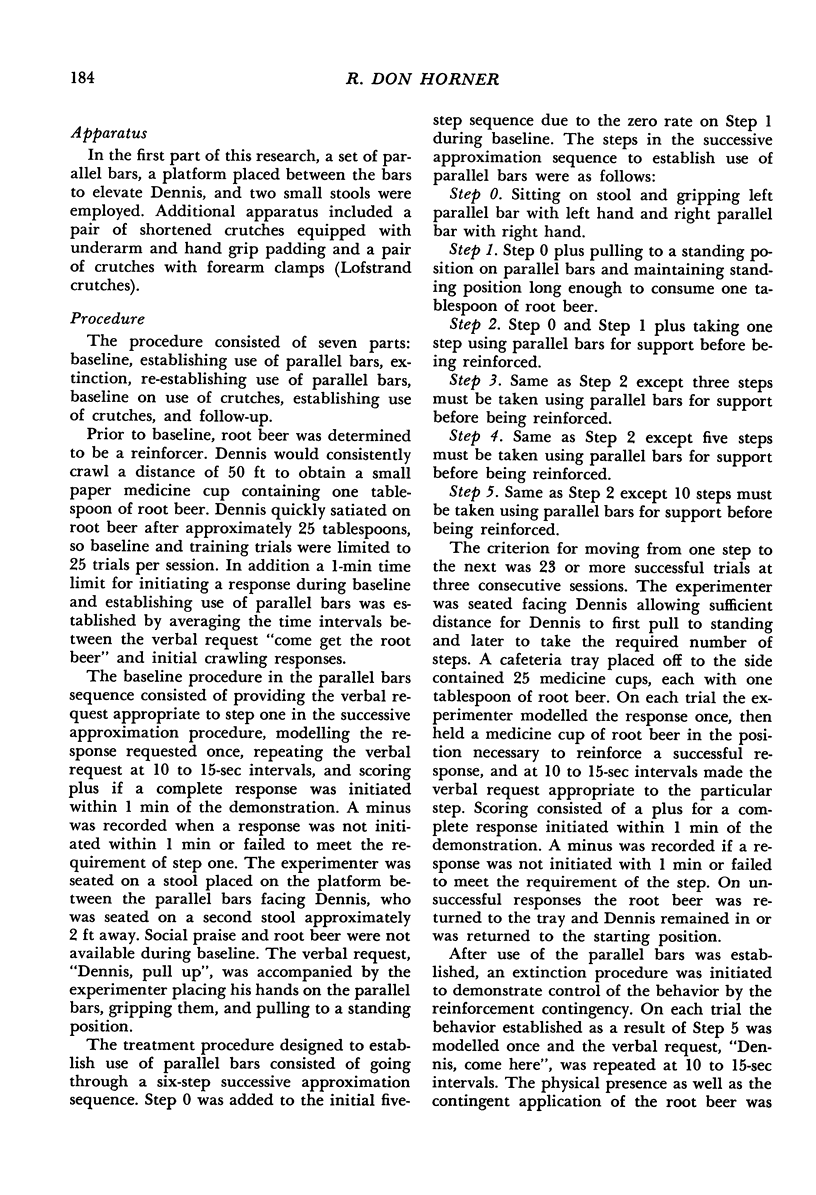

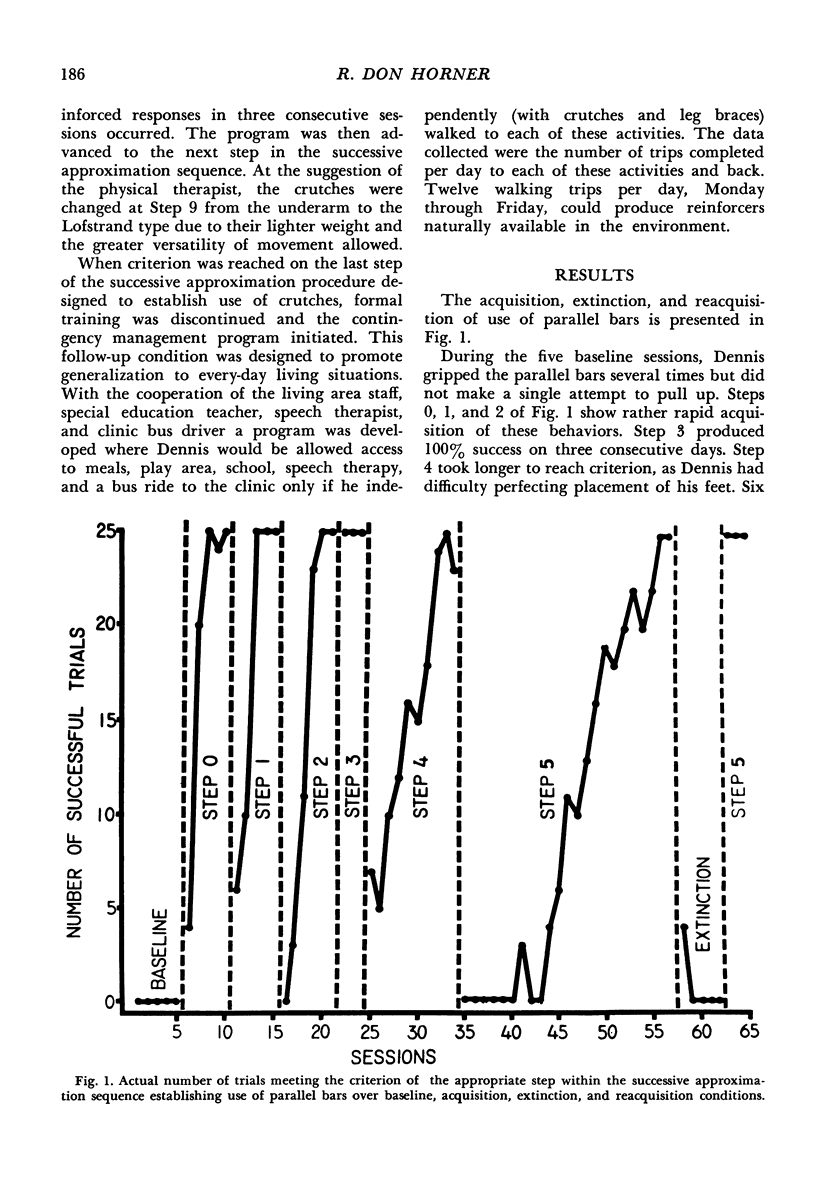
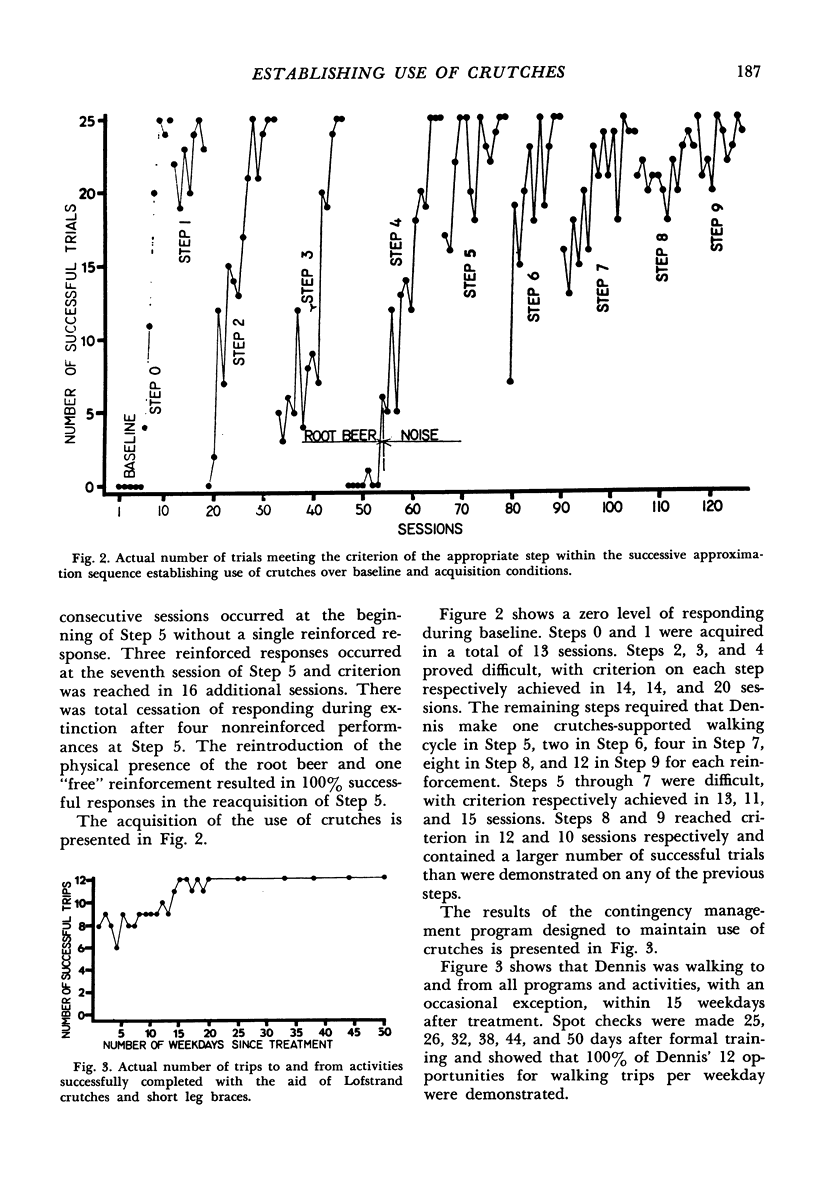
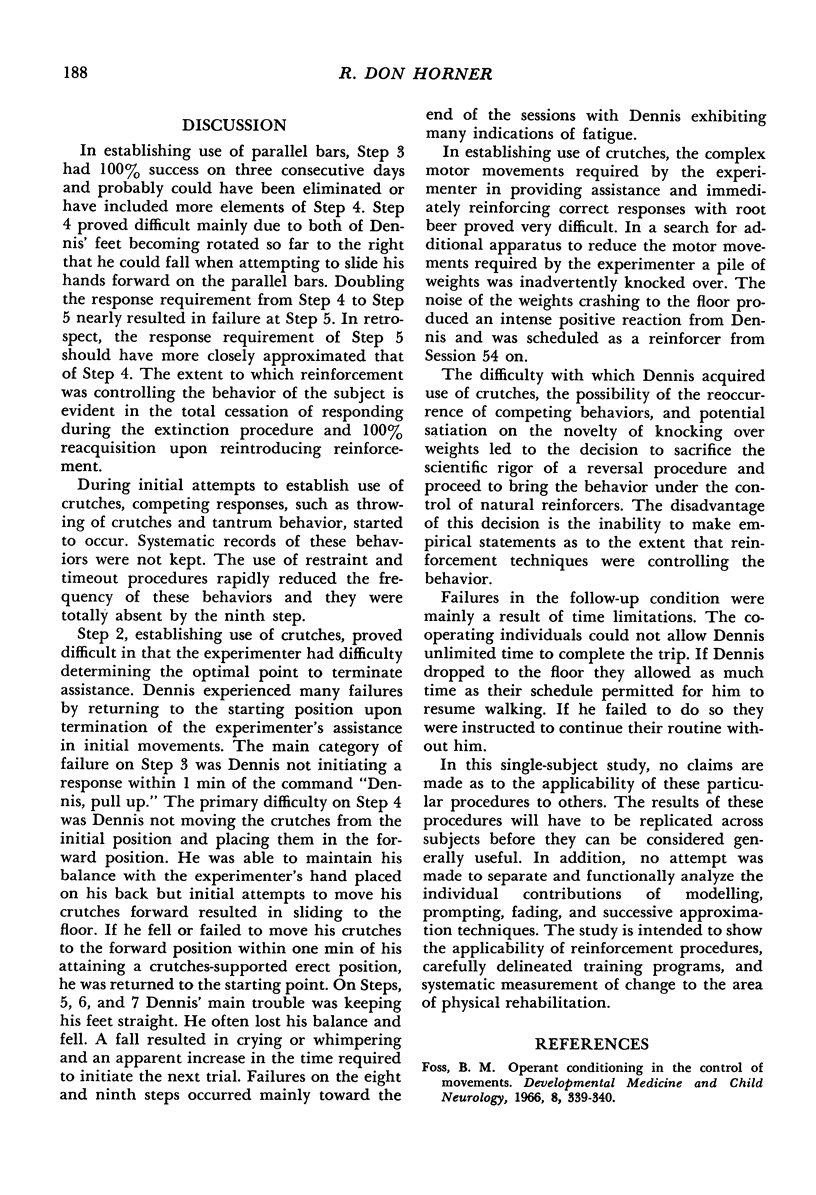

Selected References
These references are in PubMed. This may not be the complete list of references from this article.
- Foss B. M. Operant conditioning in the control of movements. Dev Med Child Neurol. 1966 Jun;8(3):339–340. doi: 10.1111/j.1469-8749.1966.tb01758.x. [DOI] [PubMed] [Google Scholar]
- Rice H. K., McDaniel M. W., Denney S. L. Operant conditioning techniques for use in the physical rehabilitation of the multiply-handicapped retarded patient. Phys Ther. 1968 Apr;48(4):342–346. doi: 10.1093/ptj/48.4.342. [DOI] [PubMed] [Google Scholar]
- Trotter A. B., Inman D. A. The use of positive reinforcement in physical therapy. Phys Ther. 1968 Apr;48(4):347–352. doi: 10.1093/ptj/48.4.347. [DOI] [PubMed] [Google Scholar]


